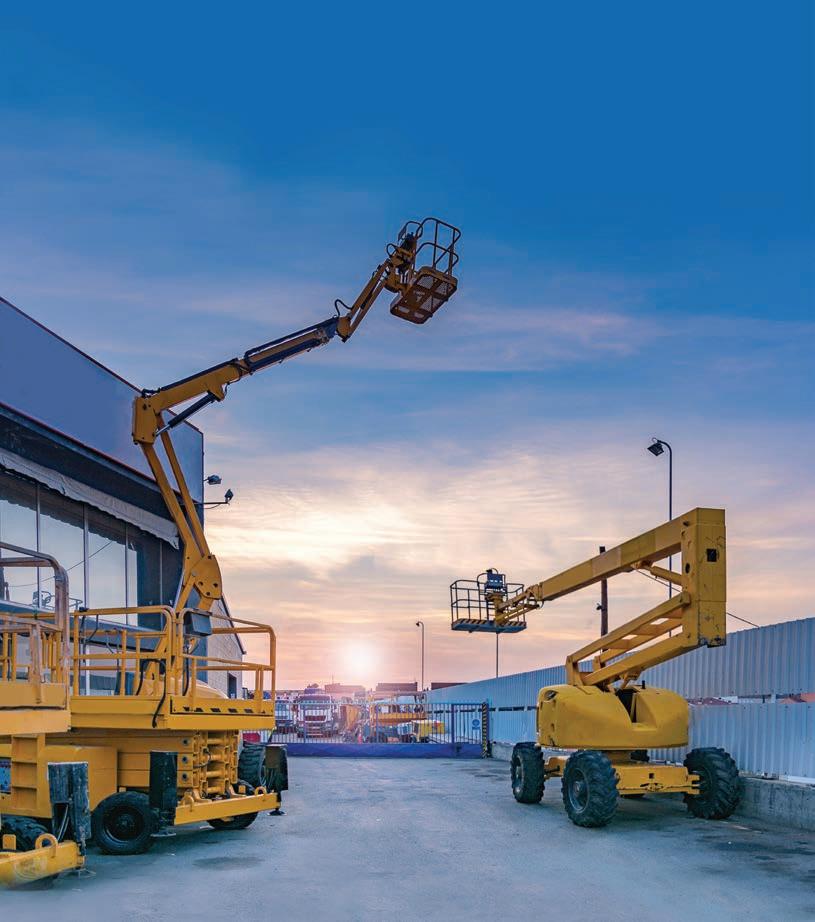
4 minute read
Shifting to electric
The push is on for electric vehicles around the world as manufacturers produce vast numbers across an array of vehicle types. Keith Clarke Haulotte Australia General Manager looks at the latest developments.
When looking at the reasons behind the growing appetite for electric vehicle fleets worldwide – tipped to help address the environmental impact of traditional diesel vehicles, we must look to the varying global market regulations which have triggered the shift toward electric EWP equipment. Understanding these regulations shines a light on potential reasons they are not being embraced in the same way in Australia as they are in other countries.
For background, fossil fuels represent around 80% of energy sources, and it is becoming increasing difficult to extract them as supply dramatically reduces. Meanwhile on road and off-road vehicles are a major source of air pollution around the world. Vehicles are responsible for carbon monoxide, hydrocarbons (a toxic compound of hydrogen and carbon), nitrogen oxides and particulate matter. These emissions can lead to dramatic health concerns for the respiratory system and heart, not to mention the impact on the natural environment.
Changing fuel sources to save the planet
The world is starting to develop systems and strategies to curb this alarming trend of environmental damage. 195 countries, including Australia, signed the Paris agreement promising to reduce its emissions by 26 to 28 per cent from 2005 levels by 2030. In addition, Europe and North America have different regulations they’ve already implemented relating to diesel engines. A step-by-step schedule is underway called STAGE program for Europe and TIER program for North America. These provide dates and goals towards the elimination of diesel engine use and manufacturing of non-road mobile machinery (NRMM). Stage V has now commenced and will require lower levels of carbon monoxide and nitrogen monoxide and sets stricter limits on emissions of particulate matter and adds a new restriction in terms of number of particles, forcing manufacturers to equip non-road engines of between 19kW and 560kW with diesel particulate filters. China has also committed to the same standards as the European Stage program, currently implementing stage III for diesel vehicles.
What’s the holdup in Australia?
As we lag behind, the question remains, why isn’t Australia formally committed to a program for NRMM vehicles? As a nation we place a high value on our amazing landscape, flora and fauna, yet we have not made a commitment to reduce emissions from our NRMM vehicles. Around the world there are also individual city commitments to green spaces, low emissions, and air quality improvements. Since 2008, London has operated one of Europe’s largest Low Emission Zones (LEZ) affecting road and off-road vehicles. It has now been extended to include NRMM vehicles that enter the Low Emission Zone, which must now have engines that meet the Stage IV emission standards. Australian cities could lead the way in committing to electric machines for dedicated green zones. There is the argument that the electricity mix in Australia is not the same as Europe, with our strong reliance on brown and black coal. The shift is happening towards more sustainable/renewable power sources with South Australia over 60% and Tasmania now 100% renewable energy sources. Even when considering a majority still being coal production, Bloomberg NEF found the EV motor is around 85–90 per cent efficient when converting coal-fired energy to power. Carbon dioxide emissions from batterypowered vehicles were around 40 per cent lower than for internal combustion engines in 2019.
The technology is ready. Most manufacturers are now producing hybrid or fully electric machines for EWP use. We at Haulotte have made the strategic decision to only produce electric machines from now on. The market is ready, sales for electric powered machines have increased over a 250% over three years in Australia. Their flexibility to not disrupt surrounding areas with noise and emissions are making them the first choice for a lot of hirers and renters. However, with no commitment to any sort of engine stage program, it is not odd to see 15-year-old machines still running on many sites, contributing to the emissions levels. The beauty of a stage/tier program is a gradual shift and phase out of the old inefficient technology and future commitment to more sustainable options. Australia has no major machine/engine manufacturing so can be flexible with its timeframes. But that should not stop us from taking a leading ethically responsible position to preserve in any way we can the unique environmental position that makes our country so great! Let us call on those with influence, not just to meet the Paris accord, but to explore what else can we do.
*References can be supplied by request. This column has been adapted from data provided at Haulotte’s HIRE21 presentation, in partnership with Coates.
Annual energy consumption worldwide by resource. Data from International Energy Agency, 2009.
• FOSSIL FUELS 81%
TOTAL = 495 exajoules (469 quadrillion BTU, or “quads”) per year
NATURAL GAS 34% OIL 34%
COAL/PEAT 26% RENEWABLE ENERGY 13%
NUCLEAR FUELS 13%
Are you really covered?
Hire Insurance Brokers are the new preferred insurance provider for HRIA Insurance.
HRIA Insurance is specifically designed to provide HRIA members with tailored insurance products for their business. As the preferred insurance provider of the HRIA, Hire Insurance Brokers provide added value to members by leveraging expert industry knowledge through direct input from the HRIA and their members, coupled with specialist insurance advice.
For more details or to contact HRIA Insurance visit www.hriainsurance.com.au











